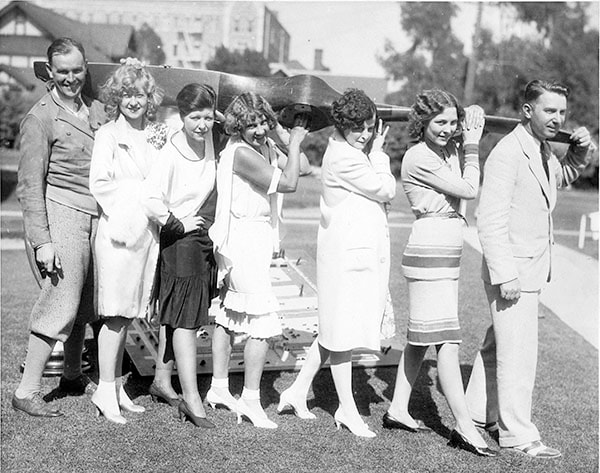When reading this 1934 Aero Digest article, keep in mind that Henderson believed that women were essential to the National Air Races. He excluded them in 1934 due to pressure from his directors. He loved the ladies – despite saying that they complained more than the men. All of this is explained in his biography – Cliff Henderson: Visionary Leader
You should avoid check over here commander viagra watching online adult content. Cliff Henderson must be a brave man! For he surely realized the storm that would develop when he prevented women flyers from taking part in any of the events at the National Air Races. It might have been only a mild squall, had he merely barred the girls from competing with the men in the high-speed events, but he tempted the fury of the gods when he stood by his decision to keep them out entirely – even refusing to include the Aero Trophy race which has been the featured event for women flyers since 1929.
He didn’t say they couldn’t race – oh, no – he promised to schedule one providing there were at least six contestants. Then, after the girls had signed up, he calmly put the speed requirements so high that not a single ship entered could qualify! Subtle?
The 99, national organization of women pilots, protested bitterly, furiously, but to no avail. The organization’s annual meeting, which is always held in connection with the National Air Races, was smaller than usual because many of the girls who have participated in former years, did not feel it was worth while to make the trip if they were only to be allowed to decorate the grand stand.
However, those who came represented the massed opinion of the enraged feminists and they resolved to fight for the right to compete. A formal protest was filed with the National Aeronautical Association and a representative will be sent to present the case to the NAA contest committee. A complete list of the records made by women flyers will be offered as proof that they have had their part in the development of racing. They do not insist on taking part in the men’s races, but will demand the right to schedule women’s events at the national event.
The Women’s National (International) Aeronautical Association has called a special meeting of their Board of Directors and have jumped into the fight to assist the 99s, as they fell that this is a matter of vital importance to all women in aviation whether they are interested in racing or not. It is a twentieth century version of the age-old question of women’s rights – shades of Susan B. Anthony and Emmeline Pankhurst. Mr. Henderson’s autocratic ruling sounds dangerously like Herr Hitler’s and Signore Mussolini’s ideas on women’s place being in the home.
As for the subject of racing itself, there have been fatal accidents at nearly every national meet, but the fact that two of those victims have been women does not prove Mr. Henderson’s attitude that they should not be allowed to race because of the hazards involved. When the fabric ripped off the wing of Florence Klingensmith’s ship, it was the opinion of many that ‘if she had kept her head and pulled-up, she would have bailed out.” This year in a similar situation, Doug Davis did pull-up, but at 250 mph there isn’t time to do much thinking whether the pilot is a man or a woman.
There is no doubt that high speed racing takes skill, courage, and sportsmanship. We might think that men have had more training in the last-named attribute when we hear that contestant, when disqualified at the recent Women’s Air Meet in Dayton, is alleged to have said, “Well, if that is the way they feel about it, the next time I’ll just cut the tail off of any ship that gets in my way, and it will be their hard luck.” But we also remember feelings over the Thompson Trophy race last year, so perhaps the odds are even on that score also.
Then, there is the old argument about the value of races. The fans and promoters still insist that the spectacular competition stimulates research and speeds the development of newer and better machines, but surely the money that is expended on prizes and for promoting these races might accomplish the same and in less dramatic ways and without the tragic toll of life. The fact that Jimmie Doolittle was the only surviving winner of the famous Thompson Trophy race, until Roscoe Turner won this year’s event, is proof that the fame and glory of a racing pilot is short-lived even among the experts.

